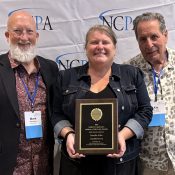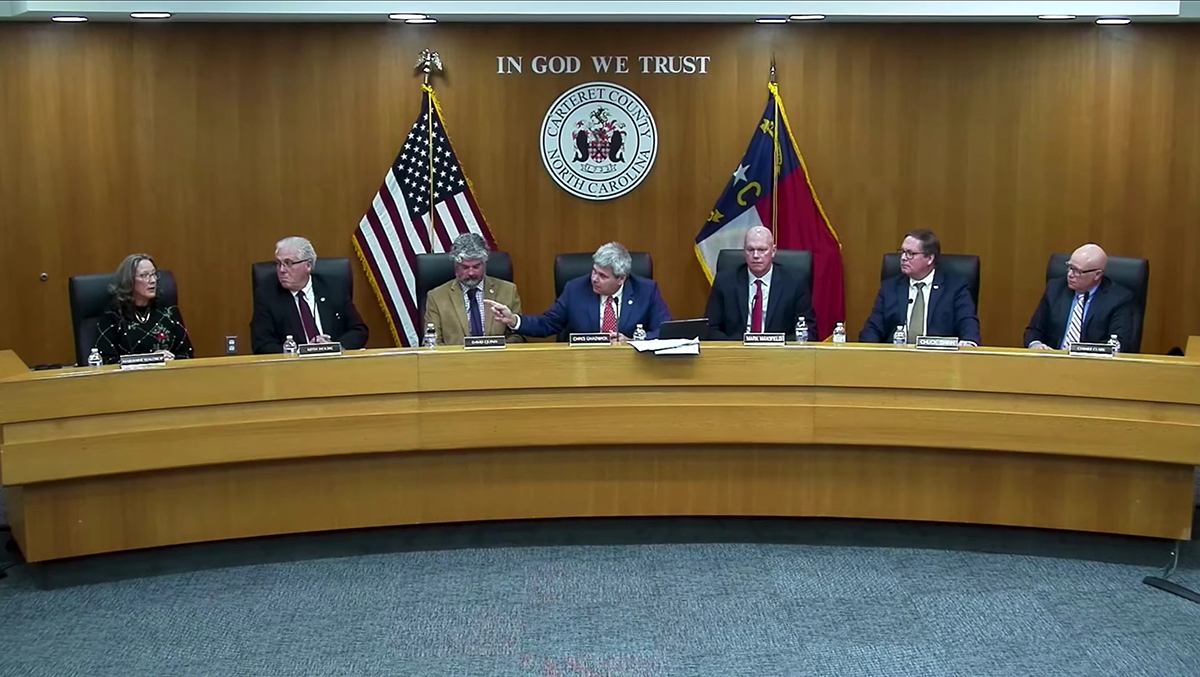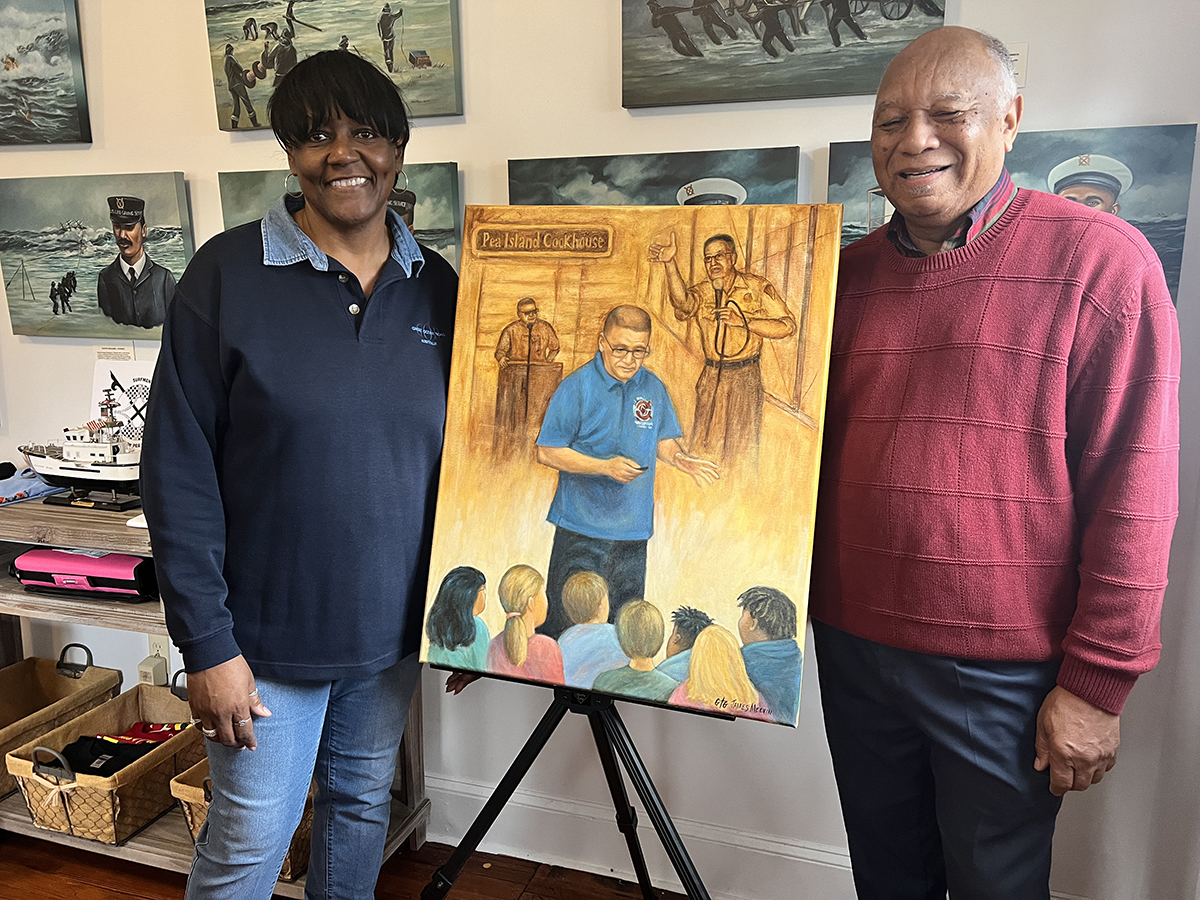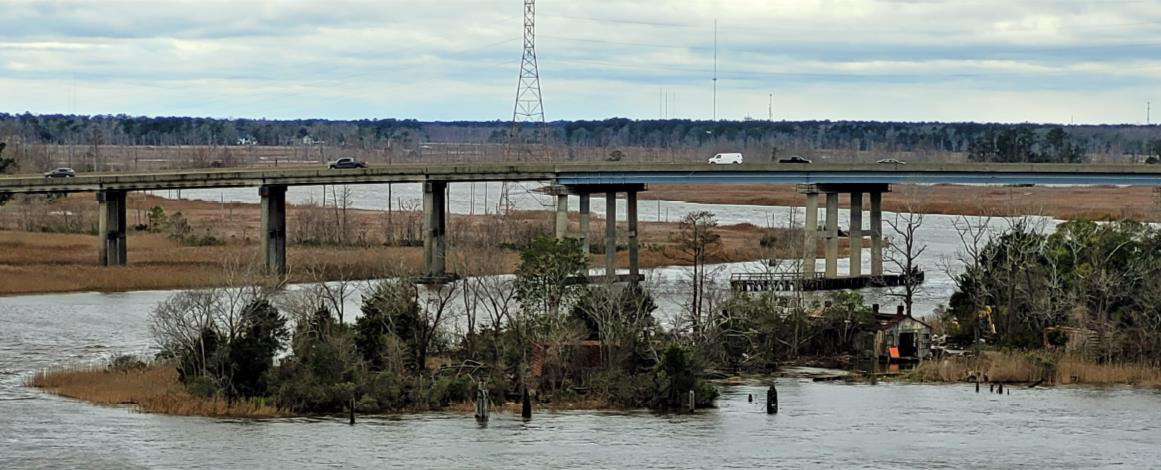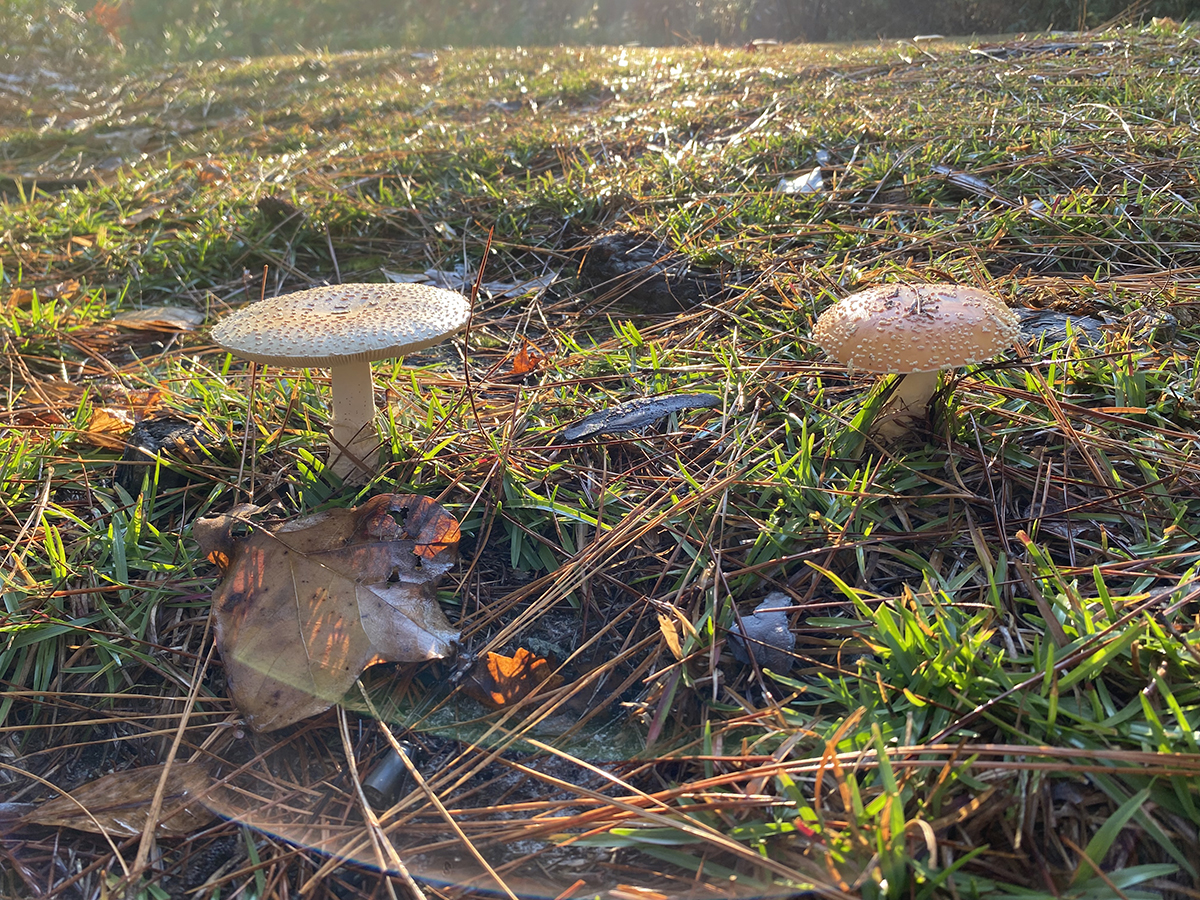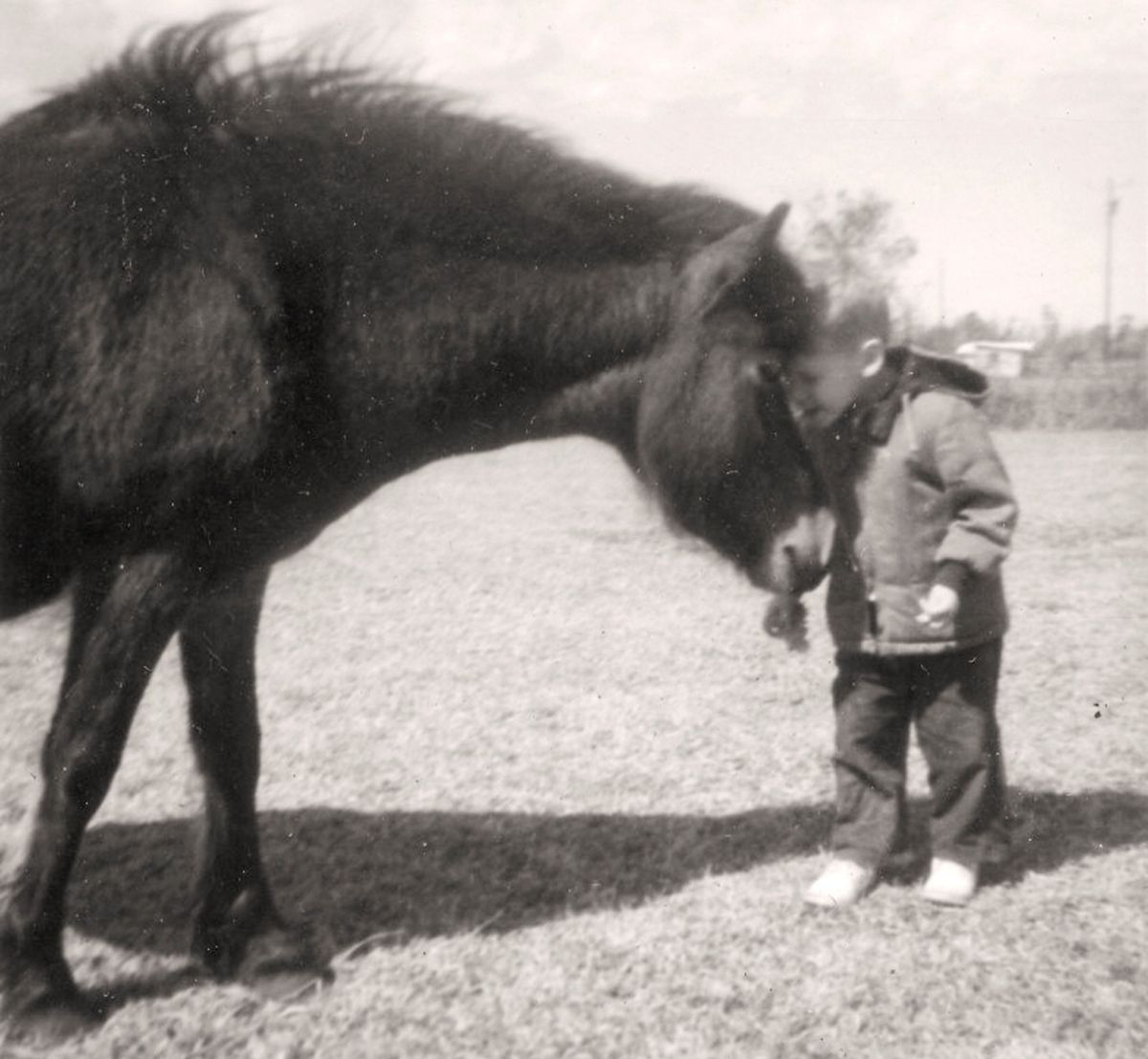
RALEIGH — Historian David Cecelski didn’t mask the grief he felt while telling the “gruesome stories” littering eastern North Carolina’s past, or the mounting dread that those days will return and put the coast’s natural resources at risk of “plunder, pillaging and poisoning.”
“This may not be the kind of keynote address that you’re used to,” the mild-mannered Carteret County native told a crowd of about 150 people during the first morning of the 2025 Coastal Summit. “I’m an historian after all, a storyteller at heart, and you have to expect that I’m going to tell some stories. I’m also going to talk about our coastal history, and how we got here, and what we might learn from the past that might help guide us today.”
Supporter Spotlight
The April 8-9 summit, titled “Ripple Effect: Enhancing Oysters, Salt Marsh and Water Quality Together,” was organized by the North Carolina Coastal Federation, which publishes Coastal Review. The biennial event brought together elected officials, representatives from local, state and federal governments, conservation organizations, researchers and others invested in maintaining a healthy coast.
Board member for the nonprofit organization Allison Besch introduced Cecelski, who “divides his time between two places that he loves deeply”: Durham, and his ancestral home in Carteret County. A longtime contributor to Coastal Review, the historian has written several award-winning books and hundreds of articles about the history, culture and politics of the North Carolina coast.
“David’s writing focuses passionately on telling stories from his little corner of the world that emanates American history more broadly,” Besch said as she described his work.
Cecelski began his address, “Our Coastal Heritage: Past, Present and Future” with an illustration of the mullet fishing camp on Shackleford Banks where his cousins worked five generations ago. He also displayed photos of himself as a young boy on the family farm that bumps up to the Harlowe Canal west of Beaufort.
“When I stay at the house, like I did the other night, I sleep in the bedroom where my mother was born, and her father and his father and his father,” Cecelski said. “And in our neighborhood, people call our house ‘the new house’ because what they call the family homeplace is about a half-mile down the road on my cousin Henry’s land.”
Supporter Spotlight
Cecelski said that when his mother was born in the late 1920s, a New Bedford, Massachusetts, company was still trapping bottlenose dolphins in giant haul seines and slaughtering hundreds and sometimes thousands of them every year on the beach at Hatteras Island.
“The islanders would shut their windows so they would not have to hear the cry of the dolphins on the beach at night. The last haul of the day, they often didn’t have a chance to process so they would leave them alive,” he continued. “When they were old men, and I would go and talk with them, local fishermen who were hired to catch and butcher the dolphins would say they still had nightmares about what they had had to do on those beaches.”
When his grandfather was a young man, New York millinery companies, or ladies’ hatmakers, “were still paying the hunters at Cape Lookout to surround nesting colonies of seabirds and marsh birds — royal turns, oystercatchers, piping clovers, sanderlings, herons, egrets, among others,” he said. The hunters would wait until the eggs started hatching, because that was when the birds were least likely to flee, and then they would start shooting, sometimes killing 10,000,15,000, 20,000, 25,000 birds in a single day.
A century ago, the swans and snow geese did not come for Lake Mattamuskeet, and less than a century ago, sea turtles were being shipped in tin cans to four-star restaurants in New York City. A pulp mill in 1937, “without breaking any laws, began dumping untreated sulfur dioxide into the Roanoke River at a site 4 miles upriver of Plymouth. By the start of the Second World War, that mill’s waste had destroyed America’s largest and oldest herring fisheries, dating back at that site two centuries,” Cecelski continued.
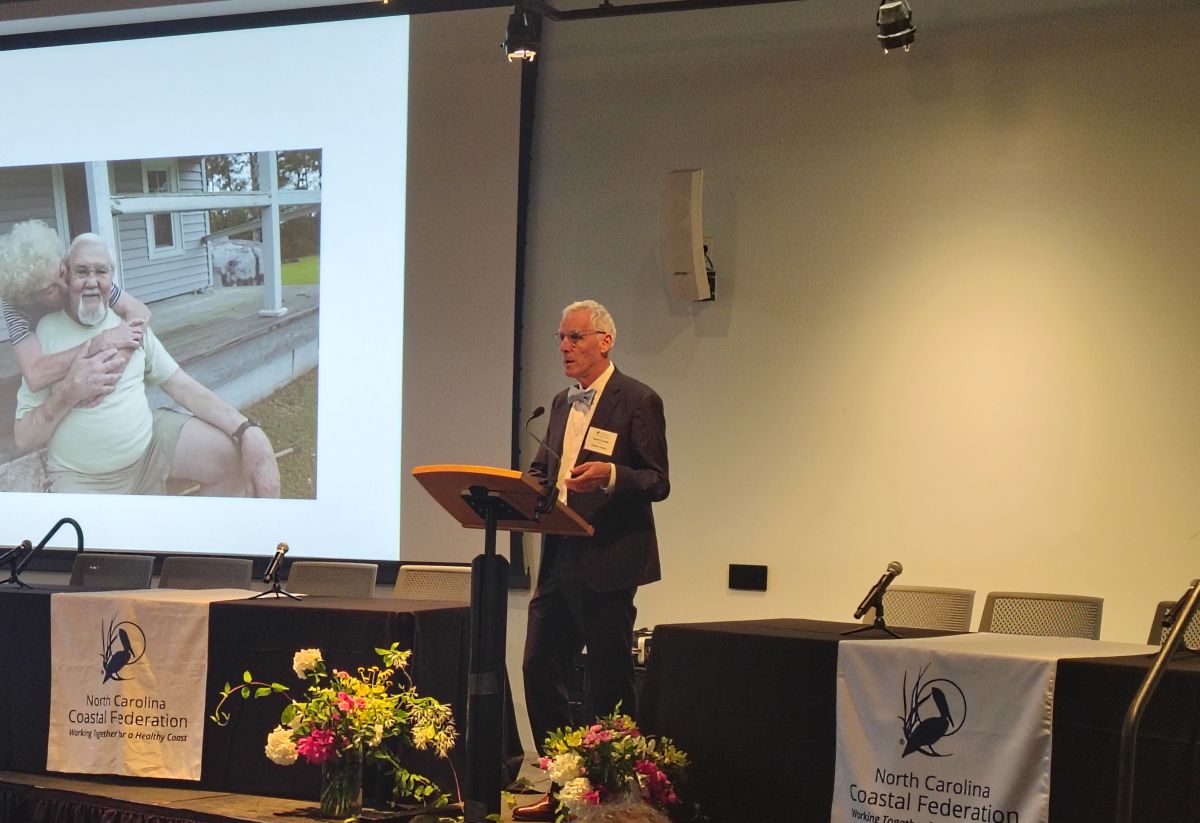
And a century ago, one of North America’s great wetlands that covered hundreds of thousands of acres north and west of the Pongo River disappeared. “It was clear-cut, drained and its waters channeled into the Pamlico River. If there is an acre of it left, I have not found it. It’s ancient white cedar forest. It’s cypress glades and the entire body of the oyster grounds of the upper Pamlico River. All gone,” Cecelski said.
“When it comes to that devastating era in the history of the North Carolina coast, I’m afraid I could go on and on and on,” but everything that is loved about the state’s coast today has come about because of recognizing that path couldn’t continue, he said.
“We learned the hard way that the strength of our coastal communities, strength of our coastal families, the strength of our coastal economy, and the strength of the kind of coastal heritage that I grew up in — our traditions of fishing, of boatbuilding, of living off the land and the water, of oyster roasts and shrimp boils, of pilgrimages to the shore to restore our souls — we learned that they are all as entwined as anything can be with the health of our coastal waters, our coastal wetlands, our fields and forests,” Cecelski continued. “And we learned that we have to work together if we want to keep the North Carolina coast the kind of place that our children and grandchildren will hold as tightly in their hearts as we hold it in our hearts.”
Even though progress has been made over the last century with environmental laws and conservation efforts, “we also know that in a lot of ways, we have just got started, and I know when we see what’s going on in the country now, that things look bleak for much of what draws us and people from around the world to our shores,” he said, and the work taking place to care for the coast may be at risk.
“I know — I’m not naming names — that there are people in high office now who act as if, well, as if they never walked down the Kure Beach fishing pier on a Friday night in the autumn when the spots and bluefish are running and seeing the joy in the children’s faces and how nobody is a stranger and everybody’s helping everybody, and how much it means to all our state’s citizens to be there by the sea,” he said. “And they act as if they’ve never walked the shores of Cape Lookout when the sea is phosphorescent, the dolphins are playing in the waves and the fish are biting, and they act as if they’ve never traipsed along the edges of Currituck Sound and felt the beauty of the marshes stir their soul.”
The shackling of the Environmental Protection Agency “alone foreshadows the breathtaking descent back into the worst days of our coastal past, when our estuaries, our beaches, our fisheries and the sources of our drinking water were a free-for-all, open to plunder, pillaging and poisoning,” he said.
“I wish I had more words of comfort for you, but we all know the road ahead is not going to be easy,” Cecelski said, reminding the audience that the work of organizations like the Coastal Federation and its partners “will never, ever be greater than it is at this moment in our history.”
He closed by telling a story about how, in the Coastal Federation’s infancy, its founder, Todd Miller, recruited Cecelski as the first volunteer.
“I think that I was invited here today, hopefully not just to tell gruesome stories, but I think I was invited here because of my historical work on the North Carolina coast,” he said.
It was the early 1980s and Miller convinced Cecelski to spend a year in Swan Quarter spreading the word about a proposed massive strip-mining project.
“They wanted to mine the peat. A large, multibillion-dollar, extremely well-connected group of investors was planning to strip mine hundreds of thousands of acres of coastal wetlands stretching across Dare, Hyde, Tyrrell, Beaufort and Washington counties,” he said.
Cecelski continued that when he first arrived, he rarely met anyone who knew about the proposed plan and on the few occasions he did, they realized the project would leave their home a wasteland and devastate the region’s oyster beds and fishing grounds.
“Past experience had led them to conclude that nobody cared what they had to say, that nobody would listen to them, and there was nothing they could do about it, because it had always been that way,” he said.
His job was “a very small part of the puzzle” to let people know what was happening, and help their voices be heard.
“At that moment, I would not have bet five bucks on the chance of our success. Everything — money, power, time — was against us, but little by little, people of every background, every race, every political party and every little village, began to speak up. Hope flickered,” he said. People began to come together and believed they could make a difference, and in the end, the people of the North Carolina coast prevailed.
Though Cecelski was young at the time, he said the experience taught him that even when it looks bleak and “if we don’t give up hope, if we hold on to one another, if we look past our differences to what we hold in common, good things will happen, and sometimes even a miracle or two, even in the darkest of times.”
Cecelski said he knows he’s a terribly old-fashioned person and out of step with much of modern times.
“I still believe in the golden rule that we should treat other people the way that we would want them to treat us. I still believe what I was taught in Sunday school, that we are called to be good stewards of God’s creation and good caretakers of our lands and waters and the creatures thereof,” he said. “I still believe, and I will always believe, what I learned growing up on the North Carolina coast, that a neighbor is a neighbor is a neighbor, and we are all in this together. And I believe with all my heart that there are some things worth fighting for, and I believe that the North Carolina coast is one of them.”


